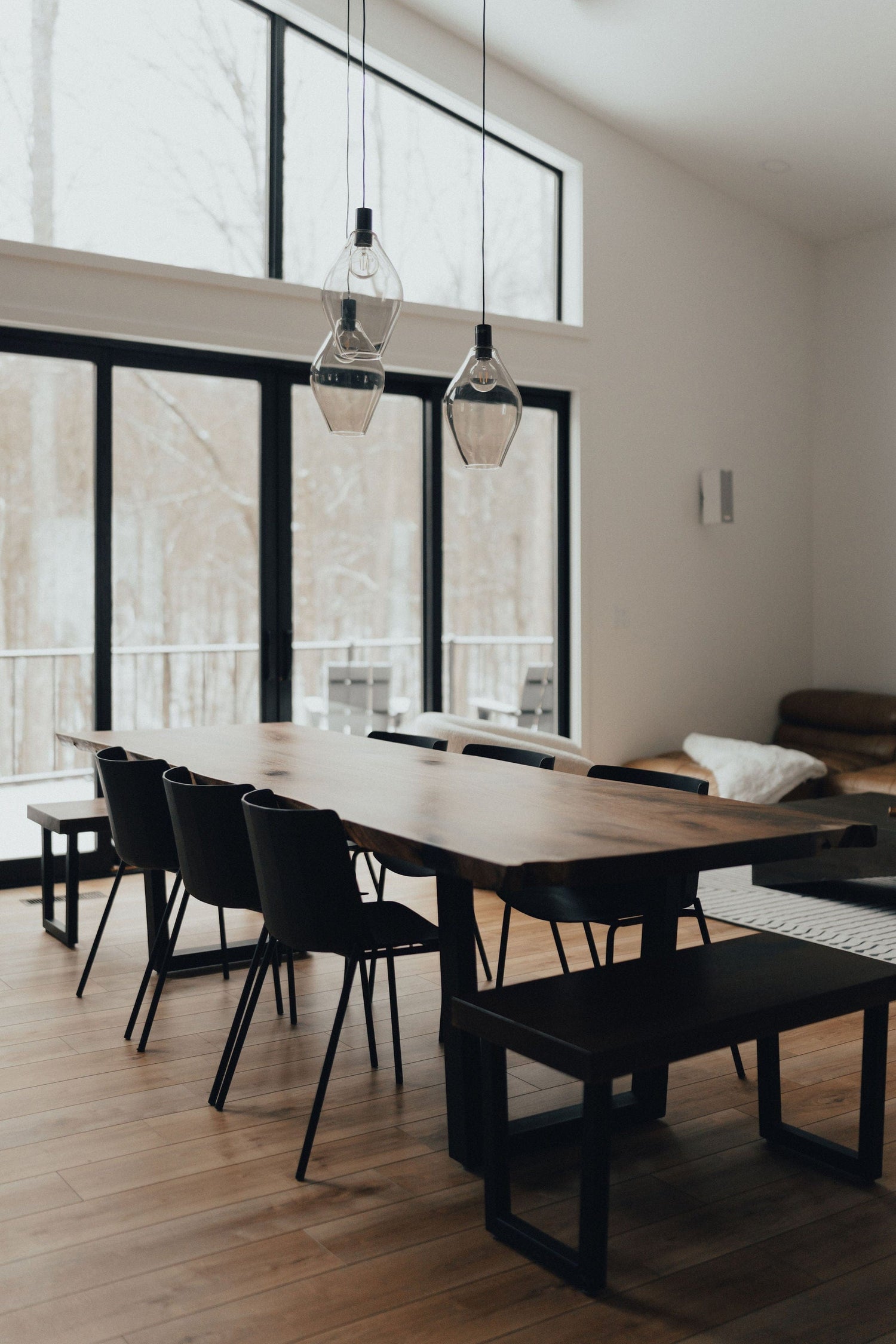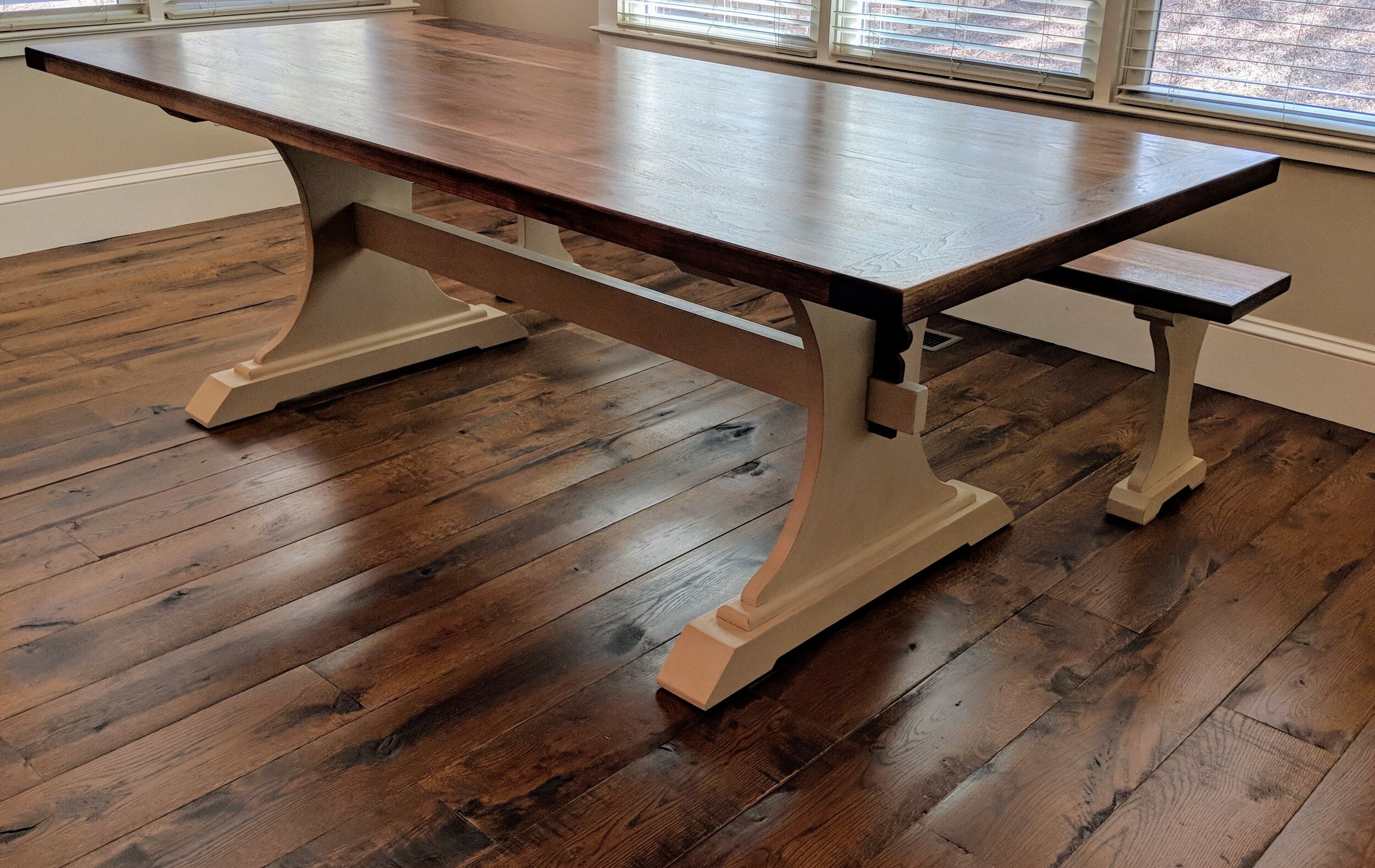How to Select the Perfect Dining-room Table Legs for Your Home Décor
Picking the optimal dining room table legs is a nuanced procedure that calls for cautious consideration of numerous aspects, including your area constraints, visual choices, and functional requirements. The interaction between measurements, materials, and styles can significantly affect the atmosphere of your eating location, making it crucial to approach this decision methodically.
Assess Your Eating Space
Evaluating your eating area is essential for picking the right table legs that match both aesthetic appeals and capability. Begin by determining the dimensions of your eating area, consisting of ceiling height, flooring area, and proximity to other furniture. This information will assist identify the ideal dimension and elevation of your table, which straight affects the choice of table legs.
Next, take into consideration the design and layout of your eating area. For instance, an open-concept design may take advantage of table legs that supply visual agility, such as slim steel or acrylic options. On the other hand, an extra traditional setting may ask for tough wooden legs that give a sense of durability.
Examine the existing shade scheme and products in your dining area. Harmonizing the table legs with these elements creates a cohesive look that improves the general decoration. In addition, consider the capability called for in your room. As an example, if you regularly host large gatherings, think about legs that offer additional support and stability.
Ultimately, a thorough assessment of your eating room will certainly direct you in making an informed choice, ensuring that your table legs not just improve the visual appeal yet likewise offer practical objectives.
Consider Your Design Preferences
When choosing dining area table legs, it is necessary to assess your individual style choices, as they dramatically influence the overall visual of your dining area. Your choice of table legs can either enhance or contrast with existing décor, making it crucial to straighten them with your recommended interior decoration motif.
If your home leans towards a contemporary visual, take into consideration smooth metal or minimal wooden legs that give a clean, minimalist appearance. For an extra conventional approach, elaborate wooden legs with detailed makings can include a touch of elegance and class. Industrial styles take advantage of durable, resources such as reclaimed timber and metal mixes, mirroring a tough beauty.
Additionally, farmhouse and rustic styles often prefer sturdy, chunky legs that stimulate a feeling of warmth and comfort. On the other hand, if your decoration is diverse, you could choose unusual shapes or a mix of materials to develop visual rate of interest.

Evaluate Material Options
The option of material for dining room table legs plays an essential function in both durability and aesthetic appeal. Common products consist of timber, steel, and composite alternatives, each offering distinctive features that can affect the general appearance and long life of your table.
Timber is a timeless selection, recognized for its heat and convenience. Woods like oak and walnut give extraordinary stamina and can be completed in different stains to match any decor. However, softwoods like pine are more prone to scrapes and dents, making them less perfect for high-traffic areas.
Steel legs, commonly crafted from steel or aluminum, exhibit modernity and industrial appeal. They are immune and highly durable to use, making them appropriate for households with children or constant events (dining room table legs). Additionally, steel can be completed in numerous shades, enhancing the customization opportunities
Composite materials, such as MDF or laminate, deal cost and diverse styles. While normally less durable than strong wood or steel, they can still provide a fashionable appearance and are often simple to maintain.
Inevitably, the material you pick should straighten with your lifestyle, visual preferences, and the degree of usage your table will certainly experience.
Determine Height and Dimension
Picking the ideal height and dimension for your eating space table is crucial for both performance and convenience. The common elevation for dining tables normally varies from 28 to 30 inches, enabling enough legroom for many people when seated. Nevertheless, it is vital to think about the measurements of your dining area and the kinds of chairs you intend to use.

In addition, consider the proportions of your dining-room. A bigger table in a large location can develop a grand setting, while a smaller table functions well in more intimate settings. Inevitably, the best height and dimension will certainly integrate with your general decor and boost the dining experience why not try this out for you and your guests.
Explore Personalization Possibilities

Additionally, the layout of the legs can be personalized to fit various designs, such as rustic, contemporary, or industrial. Tapered legs can evoke a mid-century contemporary feel, while beefy, block-style legs may reverberate with traditional or farmhouse style.
Property owners can likewise check out shade surfaces, from all-natural wood discolorations to paint, allowing them to match or contrast with the tabletop and surrounding style.
Moreover, leg elevation can be adapted to fit details seating plans or individual preferences, improving both comfort and performance.
Last but not least, special decorations, such as carvings or ornamental braces, can even more individualize the table legs, making the eating experience not just a dish but a statement piece in the home. By considering these modification options, property owners can produce a dining-room table that genuinely mirrors their individuality.
Final Thought
Picking the ideal dining space table legs calls for careful consideration of different aspects, consisting of the dimensions of the dining space, style choices, product sturdiness, and wanted height. Customization choices additionally boost the capacity to achieve a cohesive aesthetic that complements the overall design. By systematically examining these aspects, house owners can make certain that the picked table legs not just fulfill functional requirements but also add favorably to the eating experience and setting of the home.
Picking the excellent eating space table legs is a nuanced process that requires careful consideration of numerous elements, including your room constraints, visual Visit This Link preferences, and useful needs.Evaluating your dining room is essential for selecting the right table legs that enhance both visual appeals and functionality.When determining dimension, determine the area where the table will be placed to guarantee it fits easily, enabling for at least 36 inches of clearance around the table for very easy activity. A larger table in a sizable location can create a grand find ambiance, while a smaller sized table works well in more intimate setups.Choosing the suitable dining area table legs needs careful factor to consider of different factors, consisting of the dimensions of the dining room, style choices, product sturdiness, and desired elevation.